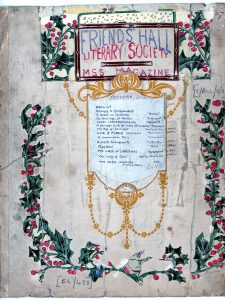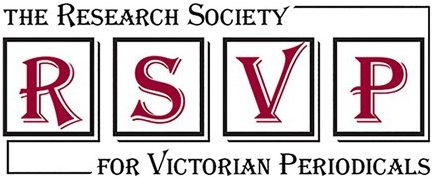
Overview
The society that produced this magazine had its origins in the adult school classes run by Quakers held at Friends’ Hall, located on Barnet Grove in Bethnal Green in the East End of London. Amongst the fairly complete set of records for this group is a history of the society by one of its members, its President, Arthur Hadley. From this, we learn that as members of the adult school classes, several of the men formed a discussion group that later became a Shakespearean Reading Circle, then a literary and debating society in 1906. Ladies were allowed as guests at the meetings; it would later become a mixed-gender group. Hadley describes their object or purpose as being the members’ mutual improvement.
The group initially met in the Red Room at Friends’ Hall on Friday nights. Following a dispute with the school’s superintendent, the society shifted their venue to The Traveller’s Rest, a ‘Coffee Tavern’ that was located on Bethnal Green Road. The group not only changed their meeting place but changed their name as well to the Bethnal Green Literary Society. Shortly after this, they moved their meetings to the Town Hall on Cambridge Road. Along with reading papers, listening to lectures and holding group discussions, the society had a study group, a summer reading programme, and a manuscript library comprised of the members’ original pieces (see below). In addition, in order to raise funds for the group, members wrote and performed original plays. The group founded a manuscript magazine fairly early on when they were still members of the adult school classes at Friends’ Hall.
Twice a year (generally in May and December), members would send their contributions to the magazine’s Editor, who would select from them the pieces to be read aloud at a society meeting held for the purpose. These were then collected and variously bound (see below). The number of contributions to these issues varies generally between half a dozen and a dozen pieces, and include mostly original prose fiction and poems. In addition, there are also puzzles, some humorous advertisements, letters to the Editor and a correspondence column. Contributors mostly use pen-names and only occasionally their own names or initials. As is fairly typical for the periodicals that were produced in the early twentieth century, the pieces are a mixture of typescript and manuscript within a single issue.
Unlike most periodicals produced by mutual improvement and literary societies, the magazine that this group produced lacks uniformity: it does not show the same consistency between issues or even within a single issue. The covers, when present, and the binding of each issue differ. Further, the size of paper used by the different contributors is quite dissimilar. These factors are a reflection of the oral medium, or the ‘magazine nights’, for which the contributions were produced and the decision taken to simply collect and use the submissions in the issues as they were. Further, the less polished appearance of the society’s magazine belies the importance that the group attached to their original literary pieces: in 1909, they voted to start a library to preserve these issues and other papers that were given at the meetings. The members of this literary group would go on to become prominent writers and novelists (e.g. Beatrice Kean Seymour), local politicians (e.g. Edmund Dutton), scholars in various fields (e.g. Horace Shipp), and eminent members of their respective communities.
Name of Club, Society or Group That Produced the Magazine
Friends’ Hall Literary Society; later became the Bethnal Green Literary Society (London)
Date of Existence
9 Feb. 1906-1916
Date of Magazine
No. 2, December 1907; No. 3, May 1908; No. 4, Christmas 1908; No. 5, May 1909, No. 6, Christmas 1909; No. 7, May 1910; No. 8, December 1910; No. 9, June 1911; (loose contributions for the manuscript magazine dating from December 1911 to June 1912)
Number of Issues
8 extant, along with some loose contributions not attributed to any issue
Manuscript/Published Magazine
Typescript and manuscript
Contents and Contributions
Advertisements (humorous); Circulation Lists; Correspondence columns; Dialogue (fiction); Editorials; Essays; Fiction/Narratives; Jokes; Poems (original); Postcard; Puzzles; Readers’ Criticisms; Tables of Contents; Title pages
Repository
Tower Hamlets Local History Library and Archives
Reference
S/BGL (S/BGL/2/1; S/BGL/2/2; S/BGL/2/6)
